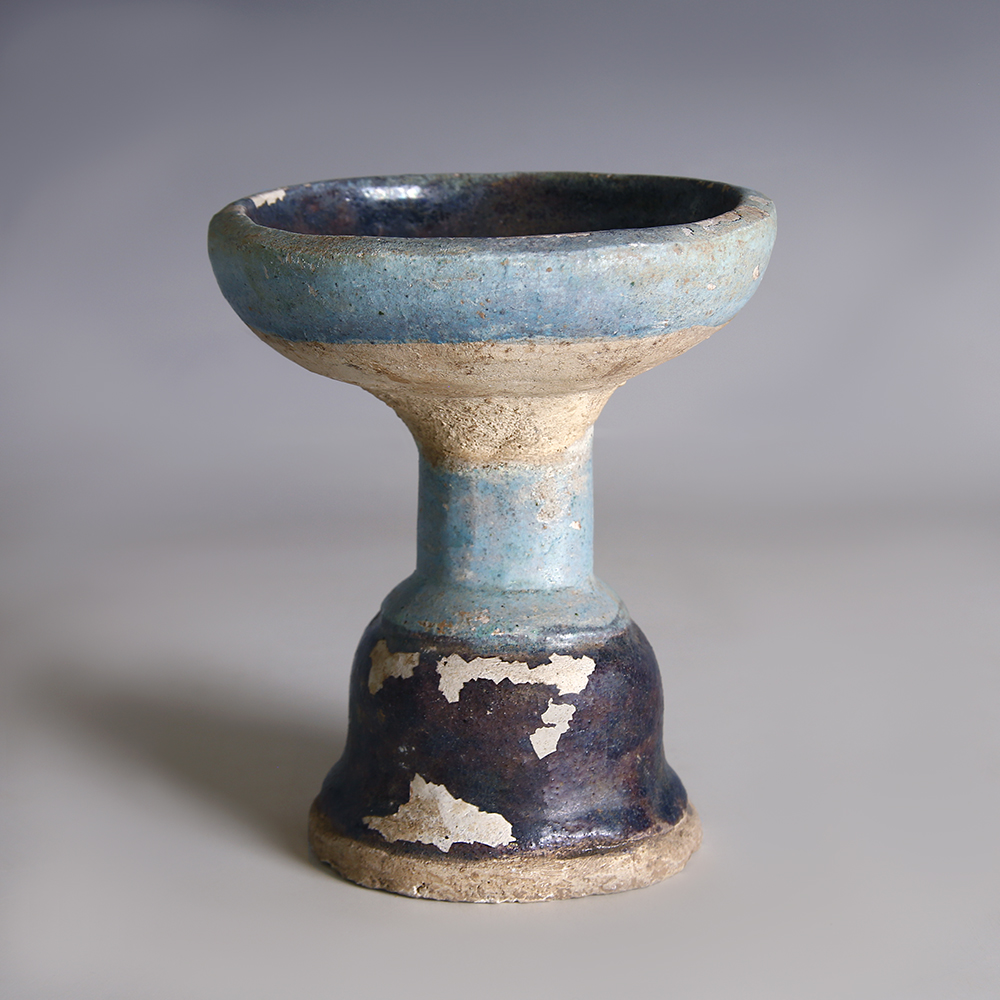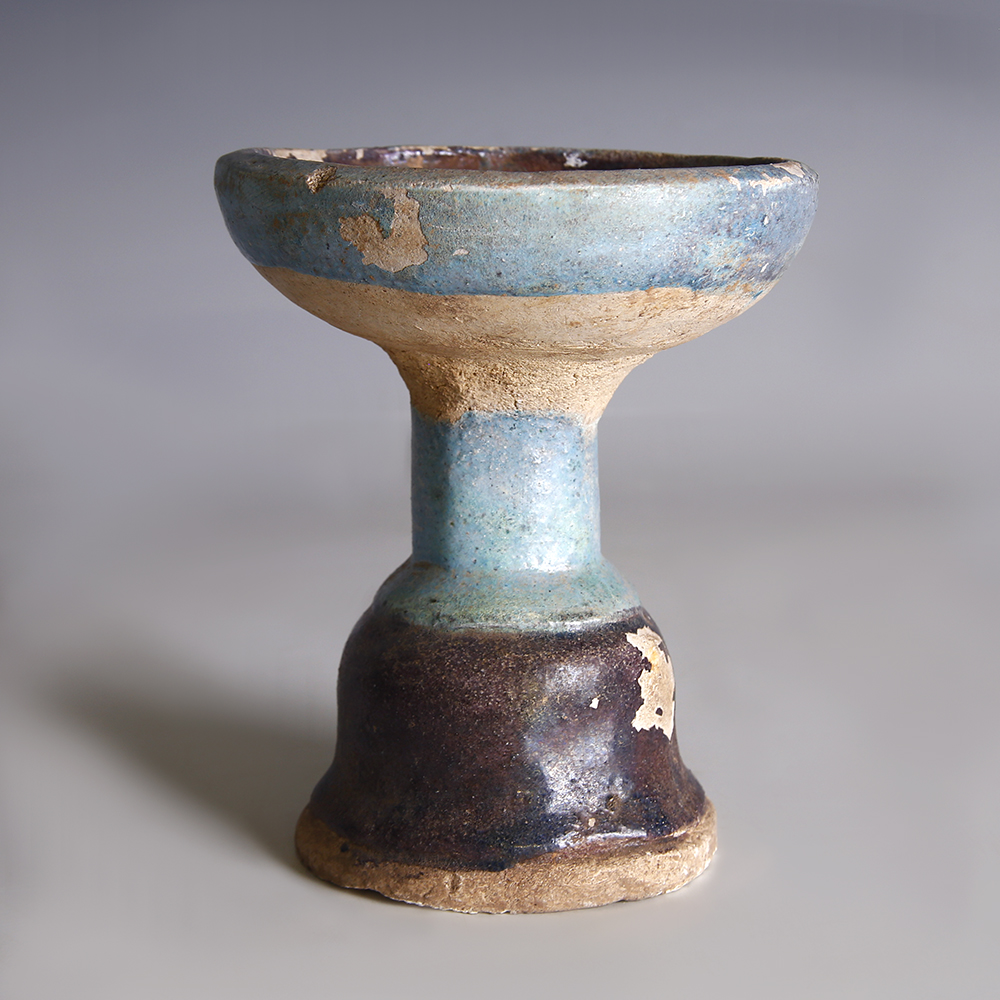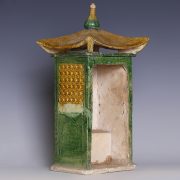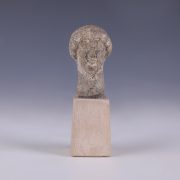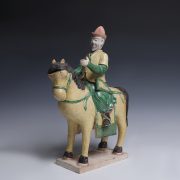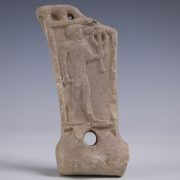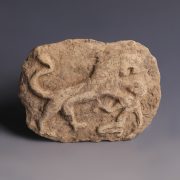The Ming Dynasty played host to some of China’s most renowned artistic achievements. The culture’s artistic explosion can be in part explained by the Ming dynasty’s economic success. Since the Han Dynasty, it was common practice to bury terracotta miniature of utilitarian and ornamental objects with the deceased; such items are known as mingqi, “spirit utensils” or “vessels for ghosts”. Mingqi were offered to assist and help the deceased in the afterlife, and they would have been modelled in the shape of cooking utensils, miniature replicas of houses and temples, as well as a range of furniture and other items, such as incense holders. Anthropomorphic and zoomorphic terracotta reproductions were popular too, designed to assist and entertain the deceased and to recreate the world of the living.
Ancient Chinese Ming Dynasty Censer or Stand
$123.73
A Chinese Ming Dynasty light earthenware incense holder or stand, hollow moulded and featuring a polychromatic glaze in turquoise and aubergine colour, echoing the colours of famous Jun wares. Such piece would have been created as burial goods, and placed in the tombs together with the deceased, in the belief that he or she would need such items in the afterlife.
Period: Ming Dynasty
Condition: Fine, with signs of ageing to the surface. Original pigmented glaze still visible.
SOLD
| Weight | 538 g |
|---|---|
| Dimensions | H 13.5 cm |
| Choice of item | |
| Culture | |
| Pottery and Porcelain | |
| Glaze | |
| Region | |
| Country |
